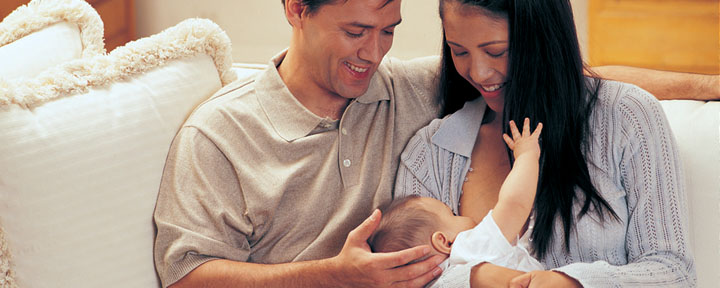
Mastitis
Mastitis is a breast inflammation usually caused by an infection that can leave a new mom feeling very tired and run-down.
Mastitis is most common in the first 6 months of breastfeeding and it’s one of the reasons new moms might stop breastfeeding earlier than planned.
It’s safe for your baby to continue nursing while you have mastitis. The good news is that breastfeeding can actually help cure mastitis along with antibiotics that your doctor can prescribe.
Be sure to get treatment for mastitis. Delaying treatment can lead to a breast abscess, which can be harder to treat.
Causes of mastitis
- Bacteria that enters the breast through a cracked or sore nipple
- Failing to empty the breast completely
- Going for long stretches between nursing
Symptoms of mastitis
- Painful breasts that may be red and/or warm to the touch
- Fever
- Chills
- Body aches
- Swollen, painful lymph nodes in the armpit next to the infected breast
- A fast heart rate
- Flu-like symptoms
- A hard, painful lump due to a pocket of infection (breast abscess)
Treating mastitis
- Antibiotics can usually cure mastitis
- Get more rest
- Drink more fluids
- Use warm or cold packs on your breast
- Increase your milk flow by:
- Placing a warm washcloth over your breast for about 15 minutes before breastfeeding. Try this at least 3 times a day.
- Massaging your breast.
- You can safely take acetaminophen (such as Tylenol) for pain or a fever.
- You can safely take ibuprofen (such as Advil) along with acetaminophen to reduce inflammation.
Breastfeeding your baby while you have mastitis
- Breastfeeding from your affected breast is safe for your baby.
- If it’s too painful to start feeding your baby from your affected breast, start with your healthy breast.
- Feed from your affected breast only after your milk is flowing
- If it’s too painful to breastfeed, hand express or use a breast pump to empty your breast of milk each time you cannot breastfeed.
By Betty Shen, MD - Published November 3, 2015